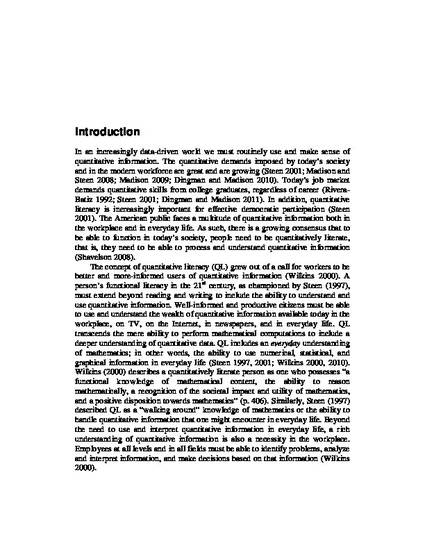
- quantitative reasoning,
- quantitative literacy,
- student development
Findings from national studies along with more frequent calls from those who employ college graduates suggest an urgent need for colleges and universities to increase opportunities for students to develop quantitative reasoning (QR) skills. To address this issue, the current study examines the relationship between the frequency of QR activities during college and student and institutional characteristics, as well as whether students at institutions with an emphasis on QR (at least one QR course requirement for all students) report more QR activity. Results show that gender, race-ethnicity, major, full-time status, first-generation status, age, institutional enrollment size, and institutional control are related to the frequency of QR activities. Findings also suggest that such activities are indeed more common among institutions that emphasize QR.
Available at: http://works.bepress.com/amber-dumford/3/
